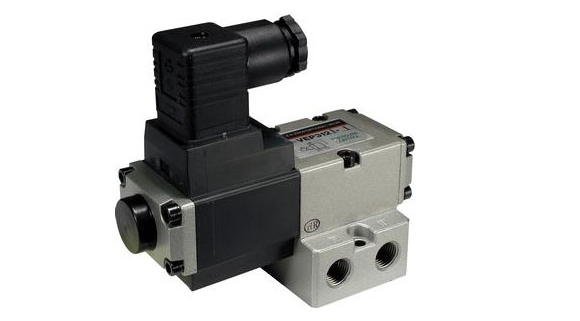Pneumatic system
Pneumatic system
A Pneumatic system is a system that uses compressed air to transmit and control energy. Pneumatic systems are used in controlling train doors, automatic production lines, mechanical clamps, etc.
Compressed air pneumatic systems require methods of safe and precise control of the actuators unique to their accouterment. Although the medium is fluid, just as hydraulic or process water systems, the execution of control is different in many ways than with a liquid. What is shared in the conduction of any fluid power medium is the need for valves to control force, velocity, and direction of movement.
Application of Pneumatic Valve
1-Air preparation
Pressure relief valves will control pressure at their inlet port by exhausting pressure to atmosphere. Relief valves are typically used only in receivers or air storage devices, such as accumulators, as a means to prevent excessive pressurization. As such, relief valves are often called safety valves and are not typically appropriate for use anywhere but the air preparation stage.
Pressure regulators in pneumatic systems limit pressure downstream of the unit by blocking pressure upstream at the inlet. Regulators are used in the air preparation stage, as well as in control of cylinders and motors. The letter R in the acronym FRL stands for the regulator, which is installed downstream of the receiver tank, but before the circuit, they are regulating pressure for.
2-Flow controls
Flow controls Also common in pneumatic systems are valves to control flow. There are fewer available types of flow valves compared to pressure or directional valves, but most circuits apply them to make for easy adjustment to the cylinder or motor velocity. Controlling velocity in pneumatic systems is more complex than in a hydraulic system because the pressure differential between the work ports of a cylinder plays a larger part.
Flow control valves for pneumatic systems are quite simple, usually available in two configurations used in two different ways. One configuration is merely a variable restriction, with a screw or knob adjustment to open and close a variable orifice, which is also often referred to as a needle or choke valve. The other type introduces a check valve, which allows free flow in one direction, and restriction in the opposing direction. For whatever reason, this valve has hijacked the name flow control all for itself.
Type of Pneumatic Valve
Two Way Valves
Two-way valves turn the air on and off in applications such as shop air, branch airlines, supply pressure to systems, and supply air to tools, motors, and similar equipment. Two-way valves can also be used as vent valves.
Three-way Valves
Three-way valves are the same as 2-way valves with the addition of a third port for exhausting downstream air. Three-way valves are available in normally open or normally closed operating configurations. These valves are used to control single acting or spring return cylinders and any load which must be pressurized and alternately exhausted. These valves can also pilot other air operated valves.
Four-Way Valves
Four-way valves use two 3-way valve functions operated at the same time, one normally closed and one normally open. These valves have two outlet ports that alternate between being pressurized and exhausted. Four-way valves are used to operate double acting air cylinders, control bi-directional air motors and in air circuitry. Also, two single-acting cylinders can be operated with one 4-way valve.
The advantages of pneumatic systems
- High effectiveness
- High durability and reliability
- Simple design
- High adaptability to the harsh environment
- Safety
- Easy selection of speed and pressure
- Environmental friendly
- Economical
The disadvantages of pneumatic systems
- Relatively low accuracy
- Low loading
- The processing required before use
- Uneven moving speed
- Noise




Leave a Reply
Want to join the discussion?Feel free to contribute!